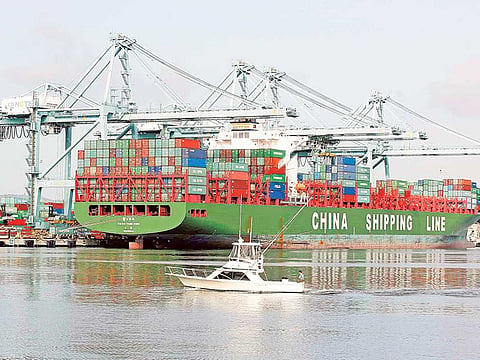Asia-Pacific trade rises 29.6%, highest in 3 decades: ADB report
Regional trade deepens despite pandemic restrictions

Manila: Trade among economies in Asia and the Pacific rose to the highest level in 3 decades, according to an Asian Development Bank (ADB) report.
Asia and the Pacific’s trade grew 29.6% in the first 3 quarters of 2021, compared with global trade growth of 27.8%.
The figures show the region’s economic resilience amid the coronavirus pandemic even as mobility restrictions and supply-chain disruptions hampered global trade, the Manila-based bank said.
Regional trade
Trade within the region rebounded 31.2% during the same period, following a 3.1% contraction in 2020, according to the Asian Economic Integration Report (AEIR) 2022, released Wednesday.
Intraregional trade made up 58.5% of the region’s total trade in 2020, the highest share since 1990.
“The strong intraregional trade, along with the release of global pent-up demand and the early economic recovery in the People’s Republic of China, underpinned the region’s economic resilience,” the bank’s report said.
Greater integration
Moves to further promote trade and investment across borders — such as the newly launched Regional Comprehensive Economic Partnership *RCEP) free trade agreement — can help advance regional trade and economic integration and pave the way for a sustainable recovery from the pandemic, according to the report.
“The strengthening trade and value chain linkages among economies in Asia and the Pacific are an encouraging sign for a resilient recovery from COVID-19,” said ADB Chief Economist Albert Park.
Pandemic damage
“The pandemic has caused visible economic damage and reversed many of the region’s hard-won gains in reducing poverty. We must build on the achievements of regional integration and cooperation to support a return to inclusive and sustainable economic growth.”
A sustained recovery will require close policy cooperation on multiple fronts, particularly in terms of managing the exit from the pandemic and establishing health and safety protocols related to economic and border reopening. Strengthening regional health security and supply chains, as well as mitigating climate change risks, would boost the region’s resilience to future shocks.
Integration among economies in Asia and the Pacific has continued to deepen in areas including new technology and digital connectivity, environmental cooperation, trade linkages, investment, and value chain participation, according to the report.
FDI, remittances
Foreign direct investment into the region also remained resilient — declining by only 1.3% in 2020, compared with a 34.7% drop globally.
Meanwhile, remittance inflows to the region are estimated to have grown 2.5% in 2021, after a 2.0% drop in 2020.
Tourism: hardest hit sector
Tourism remained one of the sectors hit hardest by the pandemic, with international arrivals in Asia and the Pacific dropping 82.8% in 2020 compared with the pre-pandemic average from 2015 to 2019.
Digital services
A chapter in the report highlights the imperative of advancing digital services trade in Asia and the Pacific. It highlights how rapid digitalisation and the COVID-19 pandemic are spurring the growth of digital services trade.
It also showcased ways economies in the region can capitalise on these opportunities through human capital development, enhanced digital connectivity, regulatory reforms and institution building, and international cooperation.
Established in 1966, ADB is owned by 68 members — 49 from the region to achieve a prosperous, inclusive, resilient and sustainable Asia and the Pacific, while sustaining its efforts to eradicate extreme poverty.
Sign up for the Daily Briefing
Get the latest news and updates straight to your inbox



